|
Cité du Train
 Opened
since 1971, the French National Railway Museum, now known
as the Cité du Train, has a range of fun, educational exhibits
on the most amazing masterpieces of railway history. Opened
since 1971, the French National Railway Museum, now known
as the Cité du Train, has a range of fun, educational exhibits
on the most amazing masterpieces of railway history.
The collections are divided into 2 parts.
Since 2005, the new building has housed a show trail consisting
of 2 areas: the “golden century of the railway” and the “return
to the golden age”, with 6 themes exploring the emotional
roots of the railway. The museum’s other star attraction, the
railway adventure, tells the story of the train.
Some thirty trains and locomotives have been carefully selected
and renovated to illustrate the technical history of the railway,
from its origins to the present day.
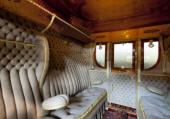 Also,
the Cité du Train collection has expanded with the addition of
two new models in the permanent exhibition (a steam-powered
locomotive and a TGV Euroduplex), together with a new outdoor
space especially for the SNCF's latest trains. The space is open
every weekend in the summer months, and hosts exhibits
demonstrating railway installations in motion. Also,
the Cité du Train collection has expanded with the addition of
two new models in the permanent exhibition (a steam-powered
locomotive and a TGV Euroduplex), together with a new outdoor
space especially for the SNCF's latest trains. The space is open
every weekend in the summer months, and hosts exhibits
demonstrating railway installations in motion.
Two new models to discover: a steam locomotive and a TVG
Euroduplex
An exceptional steam locomotive model is the latest arrival in
the "Steam: How does it work?" permanent exhibition. It
is a 141 TC 701 steam locomotive.

In 1930, while engineers from the Epernay workshops of the
Compagnie des Chemins de fer de l'Est were building two
prototype tender locomotives, the apprentices in those workshops
built a smaller, highly precise 1/5th scale model of the same
locomotive. At the Cité du Train, the model springs into action
every 20 minutes, allowing visitors to see the machine in
operation and the pistons working under steam pressure.
At the end of the Platforms of History – platform 12 – the Cité
du Train exhibits a 1:1 scale model of the SNCF's latest TVG:
the Euroduplex, built by Atelier Alain Pras to match the
original in every detail.
The driver's cab can also be visited to get a feel for the
locomotive, which will be coming into service as part of a new
delivery of locomotives for the national company.
The TGV Euroduplex train is on display in the Platforms of
History area, where you can experience 170 years of SNCF
locomotive innovation through a story-led presentation of 63
trains. The story begins with the Buddicom, the oldest steam
train on display at the Cité du Train, and takes visitors up to
the latest TGV ordered by the SNCF, allowing travel at speeds of
320 km/h (199 mph).
The outdoor area
The outdoor area is situated along the SNCF line connecting
Mulhouse to Strasbourg, beside the tram-train line linking
Mulhouse with Lutterbach and Thann.
It can be accessed from platform 6 of the Platforms of History.
From there you can see many different trains as they pass by:
TER automotives, TER trains providing connections between
Mulhouse and Basel at 200 km/h (124 mph), Corail trains,
freight trains and even TGVs.
A very tall mechanical signal mast dominates the space The
Code of Signals, known as the Verlant Code (1934), was
invented by engineer Eugène Verlant, and aimed to standardise
signalling across the railway networks. The signal mast at the
Cité du Train illustrates the code with the "carré" (stop)
and "avertissement" (warning) signals. It was
originally installed at Ussel station in the Corrèze region.

Moving railway
installations:
a transporter bridge and a turntable
Come and learn about these two railway installations, crucial to
the running of railways. The turntable allows steam locomotives
with a tender (an external wagon containing water and coal
reserves) to be conveniently turned so that they are pointing
with the chimney at the front when the train leaves.
Many turntables were installed in terminus or intermediary
stations to make it easier for locomotives to be turned around.
At the Cité du Train, a 030 C 815 steam locomotive stands on the
turntable. It was built in 1883 at the Wiener-Neustadt factories,
and is part of a major series of locomotives ordered by the
Compagnie des Chemins de fer de l'Ouest to pull its goods
trains.
The transporter bridge, powered by electric motors, allows
trains to access the reserve platforms and the Platforms of
History. |

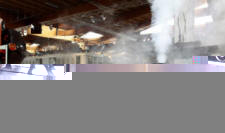
2
rue Alfred de Glehn - Mulhouse
Tél : +33 (0)3 89 42 83 33
www.citedutrain.com



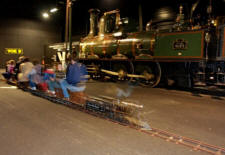
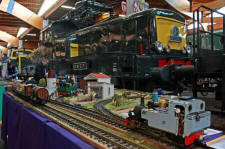


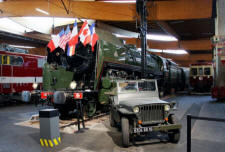
|